Obelisks in Rome – where did they come from?

The Roman emperors used to bring various “souvenirs” from their travels. And so there was nobody surprised when they brought the whole Egyptian obelisks from a visit in Egypt. These huge monuments were really one of the most famous trophies of ancient Roman leaders. They were most valuable kind of prey, which proved their superiority over the pharaohs.
Egyptian pharaohs considered obelisks as symbols of divinity and immortality, while Roman emperors decorated their temples and mausoleums. After the fall of the Roman Empire they remained buried for centuries under the ruins. They were later discovered and excavated during the Renaissance, when ironically became a symbol of the celebration of the Christian rulers of Rome, ie the Popes.
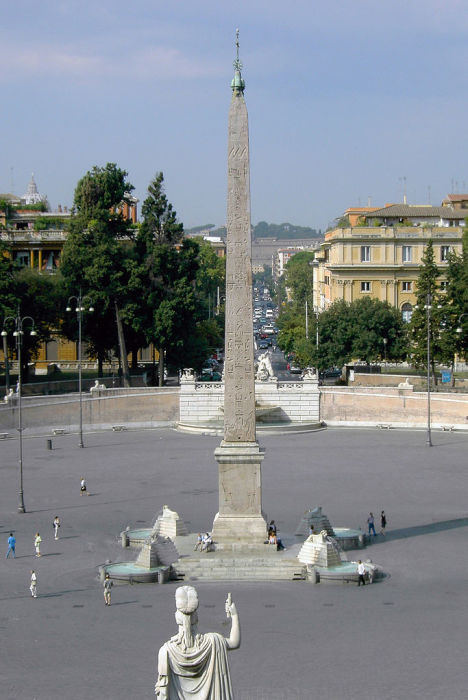
Flaminio obelisk at Piazza del Popolo by Martin Knopp
Currently, you can find a total of 13 of these stone giants in Rome. They decorate the most beautiful squares of Rome and became part of the Roman cultural heritage. Pope Sixtus V. was a big fan of obelisks and therefore, the four of them have been used as a Christian symbols.
St. Peter’s Square in Vatican has obelisk, which was brought to Rome by Caligula or Nero. From 40 AD until 1585 the obelisk adorned the nearby Circus.
Then it has been moved to its present location by architect Domenicus by command of Pope Sixtus V. To fulfill this command he needed 900 men, 140 horses and several tens of giant reels.
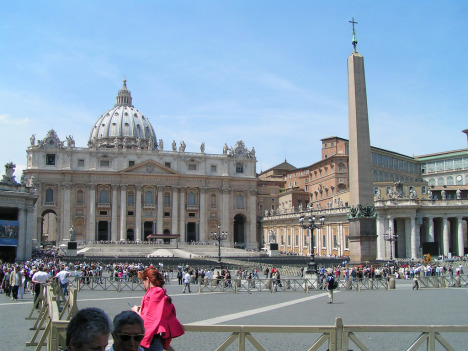
Vaticano obelisk at St. Peter’s Square by Julius
Other pope’s effort to Christianize pagan monuments was erection of 15 meters high obelisk on the Esquiline Hill (Piazza dell’Esquilino), behind the Basilica of Santa Maria Maggiore.
In the past, this obelisk featured the Mausoleum of Emperor Augustus, but since it was erected on the Esquiline hill, “serves Christ”, as indicated by the inscription.
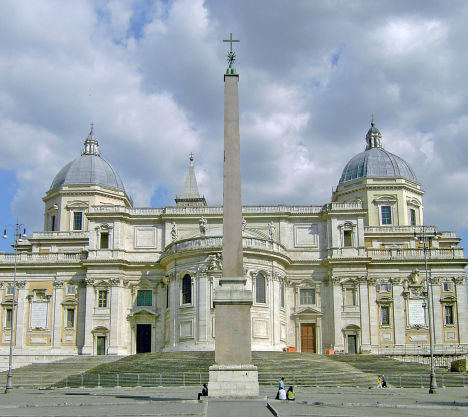
Esquiline obelisk at Piazza dell’Esquilino by Martin Knopp
Other two obelisks were discovered on the Circo Massimo, one of them is now on the Piazza San Giovanni in Laterano and with its 37.2 meters it is the tallest obelisk in Rome and with its 455 tons it is the largest obelisk in the world.
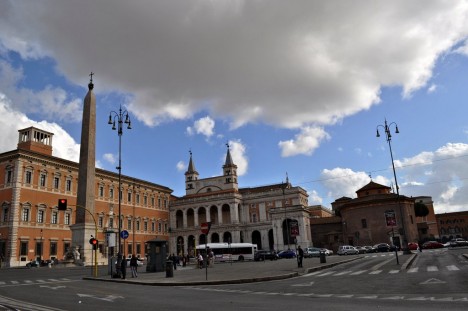
Lateran obelisk, Piazza di San Giovanni in Laterano by Simone Ramella
The second one stands on the Piazza del Popolo and is dedicated to the Virgin Mary. It was built in the 13th century BC.
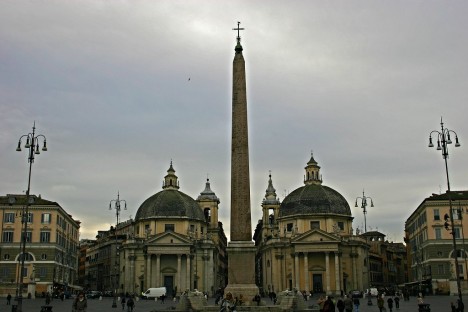
Flaminio obelisk, Piazza del Popolo by Sigmar
Today obelisks already form an integral part of the Italian capital, so it may happen that you will not notice them at all. One of the obelisks was incorporated by Bernini into its impressive fountain of four rivers Fontana dei Quattro Fiumi on Piazza Navona.
This fountain has a square base and depicts four rivers, as symbols of the four continents known at that time. On every corner there is the statue of a man, figuring the different rivers.
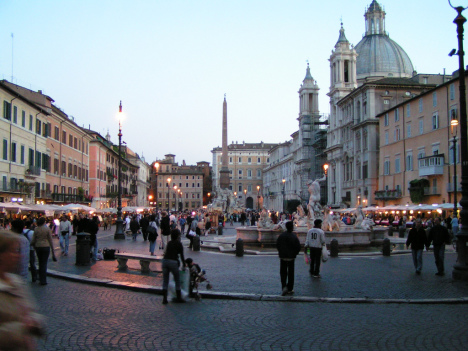
Piazza Navona and Agonalis obelisk in the middle by Julius
Another one, only about 5 meters tall obelisk Minerveo stands on the back of marble elephant located at Piazza della Minerva, in front of the church of Santa Maria sopra Minerva, just behind Pantheon.
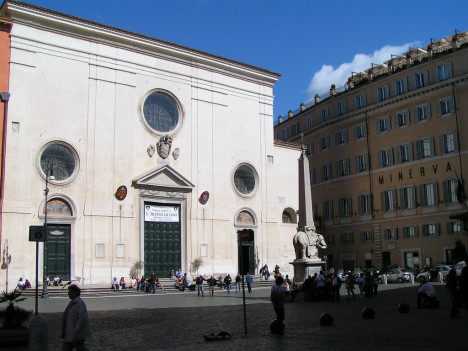
Minerveo obelisk at Piazza della Minerva by Julius
A certain Italian nobleman Ciriaco Mattei brought one of the obelisks into his garden at Villa Celimontana. This is the smallest obelisk in Rome.
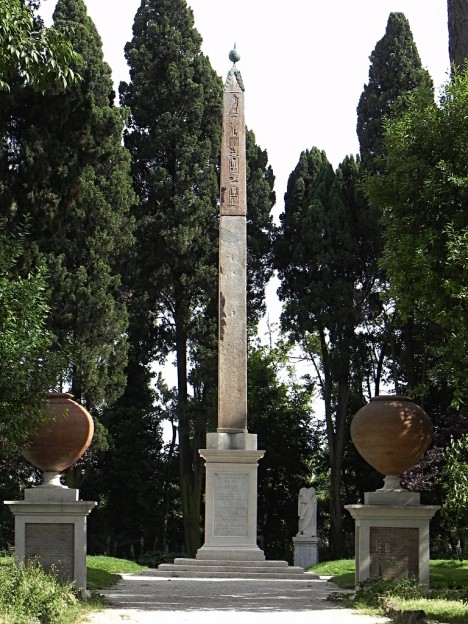
Matteiano obelisk at Villa Celimontana by Tristantech
Obelisk called Macuteo can be seen in the fountain made by Giacomo della Porta at the Piazza della Rotonda.
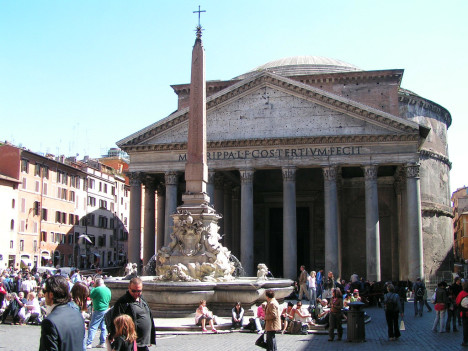
Obelisk Macuteo at Piazza della Rotonda in front of Pantheon by Julius
But Pope Sixtus V. was not the only person fascinated with Egyptian obelisks. Two centuries later, in the 18th century, Pope Pius VI. placed a red granite obelisk between sculptures of Castor and Pollux at the Piazza del Quirinale.
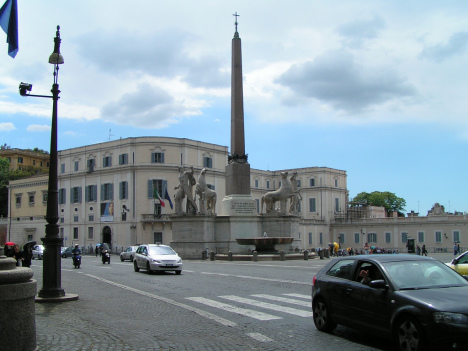
Quirinale obelisk at Piazza del Quirinale by Julius
Obelisk rises well above the famous Spanish Steps and since 1792 also at the Piazza Montecitorio. This obelisk was once used as a pointer of giant sundial in the Campus Martius.
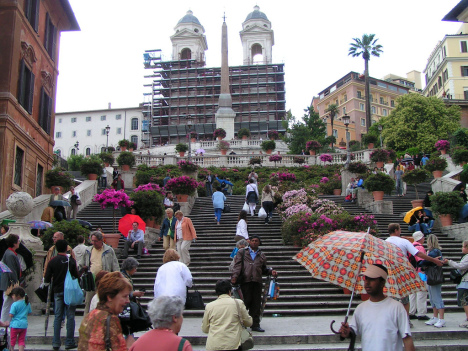
Sallustiano obelisk above Spanish Steps by Julius
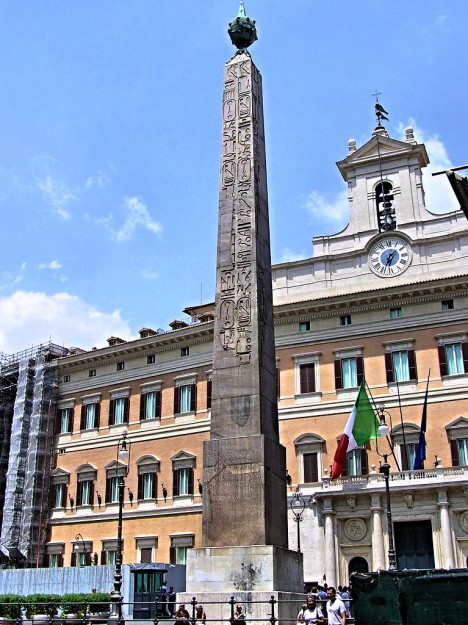
Obelisk of Montecitorio, Piazza Montecitorio by Adrian Pingstone
Another obelisk has been moved onto the Pincio hill by Pope Pius VII in 1822. Originally it was built by Roman Emperor Hadrian as a memorial to his friend and lover Antinous. This one is not Egyptian obelisk but the Roman one.
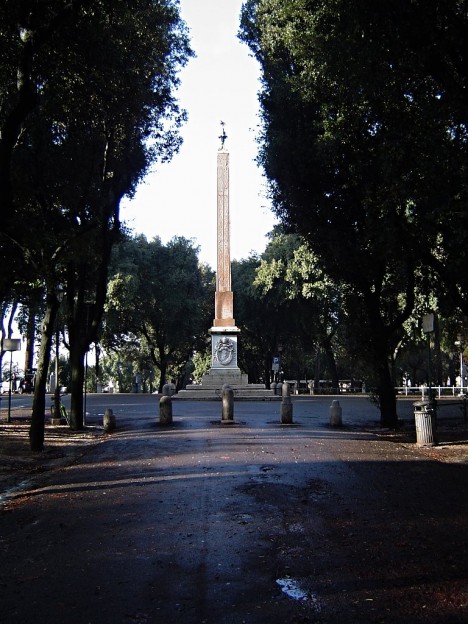
Hadrian Obelisk in Pincio hill by Joris
And the last one dates from the reign of Egyptian Pharaoh Ramses II. It was discovered in 1883 and then moved to a small park near the Termini railway station.
Its name is Dogali and can be found in Baths of Diocletian, which were the largest public baths in the past.
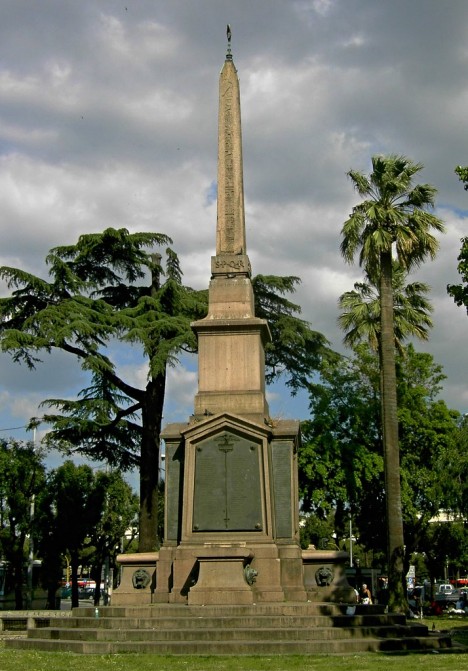
Dogali obelisk, Baths of Diocletian by Martin Knopp


